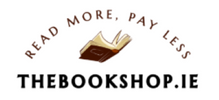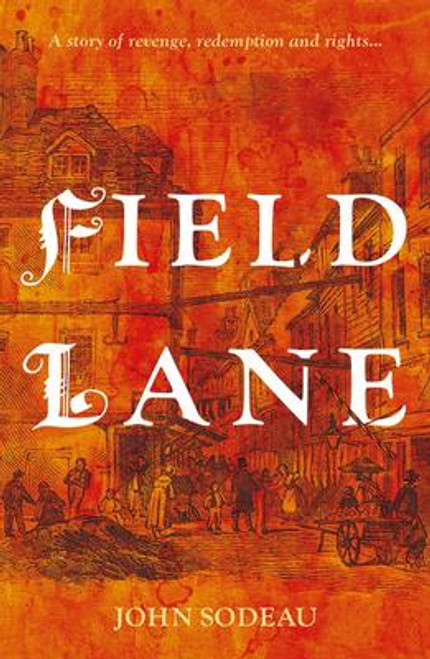Product Description
Charley Bates was an outsider. Always the third wheel to the Artful Dodger and Oliver Twist’s double-act in Fagin’s gang. Then he became the redeemed thief who managed to turn himself into ‘the merriest young grazier in the whole of Northamptonshire.’ But would he remain on the straight and narrow or go back to his criminal ways? What he needed was a mission to keep himself honest. And then he got one: a chance to bring justice to bear on a villain from his past, Monks, the half-brother of Oliver Twist. Getting even would mean a trip from the Thames to the Mississippi and help from old friends to right the wrongs done by the ‘creature’ as Charley thought of him.
Field Lane reflects a 19th century world filled with social injustice, slavery, drug abuse and Royal privilege. Its fictional characters become intertwined with real-life historical figures such as the Duchess of Kent (the mother of Queen Victoria), the scientist Michael Faraday and Sam Clemens, the boy who would become Mark Twain. At the climax justice is indeed served in line with Charles Dickens’ wish. But by whom?
Published 28th February 2024
BRAND NEW , COPIES SIGNED BY THE AUTHOR
John Sodeau is currently Emeritus Professor of Chemistry at University College Cork, Ireland. Previously he taught and researched at Universities in UK, USA and Japan. Over a period of 40 years, he has written many hundreds of thousands of words, but this novel is his first work combining his interests in literature, history, social justice and science. He is sometimes described as an air pollution and climate change campaigner.
John was kind enoug to write a short piece for our blog on the genesis of the book -
https://thebookshop.ie/thebookshop-ie-blog/author-john-sodeau-on-writing-his-new-book-fair-lane/
https://www.echolive.ie/corklives/arid-41352835.html
Product Videos
Custom Field
Product Reviews
2 Reviews Hide Reviews Show Reviews
-
EXCELLENT
Mr. Sodeau’s evocative account of the adventures of Charley Bates transported me to the underbelly of 19th century London where familiar literary and historical figures commingle with his artfully created cast. Like it or not, the reader is dragged into the murky streets of London where all manner of corruption exists. The role of the apothecary and the origins of Tanquery Gin are just two topics that are effectively woven into this tale. You will be disgusted by child prostitution, and appalled by the ingredients in Royal Caribbean Cream. The novel is not without humor as Charley and the gang run scams, including their crude take on Shakespearian performances. Although distant from our current society, parallel themes of addiction and social injustice are explored both in London and New Orleans. The rescue of Oliver Twist, and Charley’s pursuit of Monks brought light into otherwise bleak surroundings. This is a realistic depiction of a world where Oliver Twist emerged, and it both entertains and enlightens. Looking forward to the next installment!
-
excellent
Cleverly developing a plot based on a lesser known Dickens character while also expanding on what we already know about the major cast of Oliver Twist, this book takes one a little closer to the darker side of 19th century London and beyond, to New Orleans and its environs. In doing so the reader is able to immediately draw parallels not only with the world created and described in what might be termed more wholesome ways by Dickens but also that which features in the novels of Mark Twain. The story essentially revolves around sex drugs and money but also draws heavily on aspects of slavery which were prevalent at the time. This said, these issues are not described in a salacious manner- but their role in the plot development are paramount. The reader is cleverly introduced to new concepts in the form of potentially addictive beverages based on morphine and caffeine, all interspersed with highly plausible science. In this regard the Chemistry Professor background of the author is clearly visible as he describes purification by crystallization and other separation and extraction methods while often citing established scientists of that era. Some of the ‘science’ involved is referred to in explanatory ‘interval’ chapters where the author seems to don his natural ‘lecturer’ persona in order to inform and educate the reader! Coming in the middle of a series of first-person chapters each introducing a particular character or set of characters these intervals are quite entertaining. This is a not a ‘who done it’ novel- it is clear from quite early on who the villain actually is. However, the main character and his companions have to go to great lengths in order to even get close to the villain often encountering other difficult and equally villainous characters before the final conclusion is reached. For a first novel the plot development with its historical references and attention to scientific detail is very good indeed such that one is easily able to be drawn in to the world that the author has created- albeit with the help of the other more-famous authors! I am greatly looking forward to reading the next ‘chapter’ in the story, in due course.
 Euro
Euro
 British Pound
British Pound














